The Cult’s Ian Astbury: ‘One minute we were fighting skinheads and psychobillies, and the next we’re in Smash Hits’
Forty years after their debut, goth pioneers The Cult are returning to their post-punk roots on tour as Death Cult. Over curry in Los Angeles, singer Ian Astbury talks to Kevin E G Perry about stepping in for Jim Morrison, playing football with Vinnie Jones, and video shopping with David Bowie
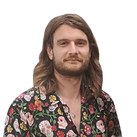
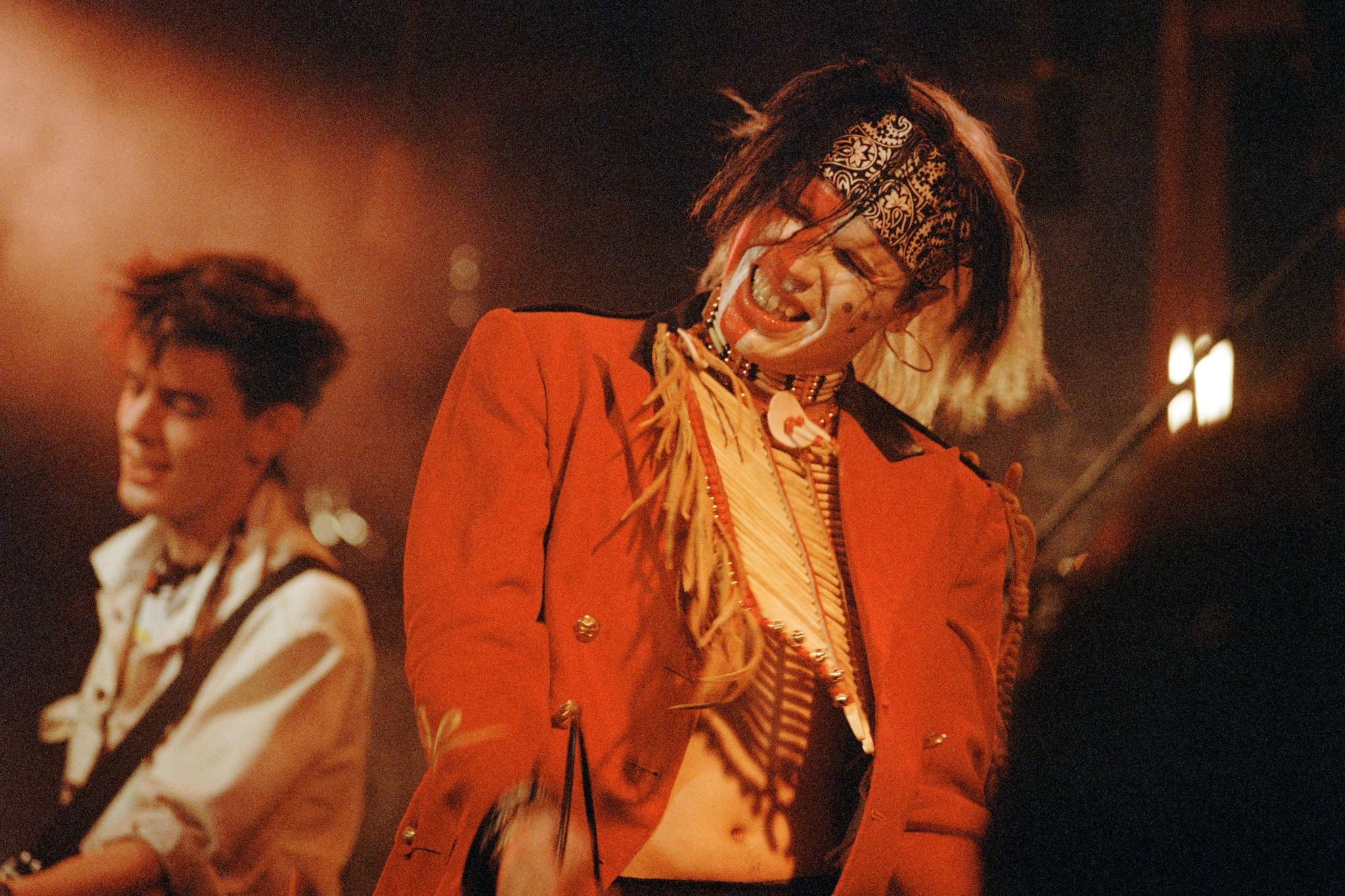
In the gloomy grandeur of a Spanish Gothic theatre in downtown Los Angeles, singer Ian Astbury and guitarist Billy Duffy are reaching into the deepest recesses of their back catalogue. As the songwriting partnership at the heart of The Cult, the pair helped pioneer the first wave of Gothic rock and went on to become one of the decade’s biggest and most influential bands, filling stadiums and in heavy rotation on MTV. But before any of that, they were a post-punk band called Death Cult, making raw, impassioned music that howls viscerally about the plight of Native Americans and the horrors of war. Tonight is a resurrection of sorts, a one-off American show ahead of a UK tour. Before the set closes with the majesty and mass euphoria of 1985’s “She Sells Sanctuary”, Astbury pauses for just a moment. “Thanks,” he says, his face smeared with white make-up and sweat, “for the rebirth of Death Cult.”
A week later, Astbury meets me for a curry at a hole-in-the-wall Indian restaurant in Hollywood beneath the Capitol Records Building. Dressed head-to-toe in black, the 61-year-old may have mountains of stories – from rock’n’roll hijinks to seeking spiritual enlightenment among the monks of Tibet – but he maintains a healthy aversion to nostalgia. “I don’t really live in a time machine,” he tells me, digging into a plate of saag chicken, rice and vegetables. “If you come to my house, I don’t have any discs on the walls or photographs and memorabilia. Actually, in 1995 I put it all on the barbecue and set it on fire.”
The decision to return to Death Cult after 40 years might seem counterintuitive, then, but for Astbury it felt like too poignant and auspicious an opportunity to pass up. “The 25th anniversary? Whatever! 30th? No. But this time I felt something different,” he says. “For Billy and I, it’s been incredible, because we go, ‘Oh, this is our DNA, where we came from.’”
Astbury was born in Heswall on Merseyside in 1962, and his family moved to Hamilton, Ontario when he was 11. It was while growing up in Canada that he first became fascinated by Indigenous culture and the history of North America, which would go on to influence songs like “Horse Nation” and “Spiritwalker”. “When I went to school, as an immigrant kid, all the other kids I hung out with were outsiders,” he explains. “My best friend was from Kingston, Jamaica. Another was from [the Turkish capital] Ankara, and then there were the Indigenous kids. That was my clan: the seekers and the weirdos. I went straight to them. I didn’t really feel like I belonged, but I did. I was a black sheep among other black sheep.”
In 1977, on a trip back to the UK, Astbury saw punks for the first time and realised his clan might be bigger than he’d thought. “My mum bought me Never Mind the Bollocks that year,” he remembers. “As soon as I heard the Pistols I thought, ‘What is going on here?’ They were our band.” Just months later, on his 17th birthday, his mother died of cancer. He was forced to confront the reality of impermanence, another prominent theme in his songwriting. “It’s huge. It’s the big elephant in the room,” he says. “That’s what Death Cult is all about. I’ve lost so many people along the way.”
He adds that one thing that’s helped him come to terms with our temporary place in the universe is the use of psychedelics, even though his first experience was an extreme one. “My old school buddy said, ‘See this guy walking down the street? Take this tiny little bit of paper and he’ll turn into Mickey Mouse,’” remembers Astbury. “I didn’t get Mickey Mouse. I ended up taking three hits. I had a profound psychedelic experience. I wasn’t yet 18, and my whole psyche just got shattered. I suffered mentally for a bit after that. I was thinking, how am I going to put this back together again? Maybe I didn’t.”
In the immediate aftermath, Astbury became a “transient kid”, following the anarcho-punk band Crass around Britain. Dressed in a trenchcoat, with crows’ feathers stuck in his prominent mohawk, Astbury spent about five months homeless and drifting. “Some nights I slept on people’s couches, or on building sites, bus stations,” he says. “I remember sleeping at Euston, and panhandling [begging] at Covent Garden Tube. Running into shops, grabbing a loaf of bread, running out and eating it in the park.”
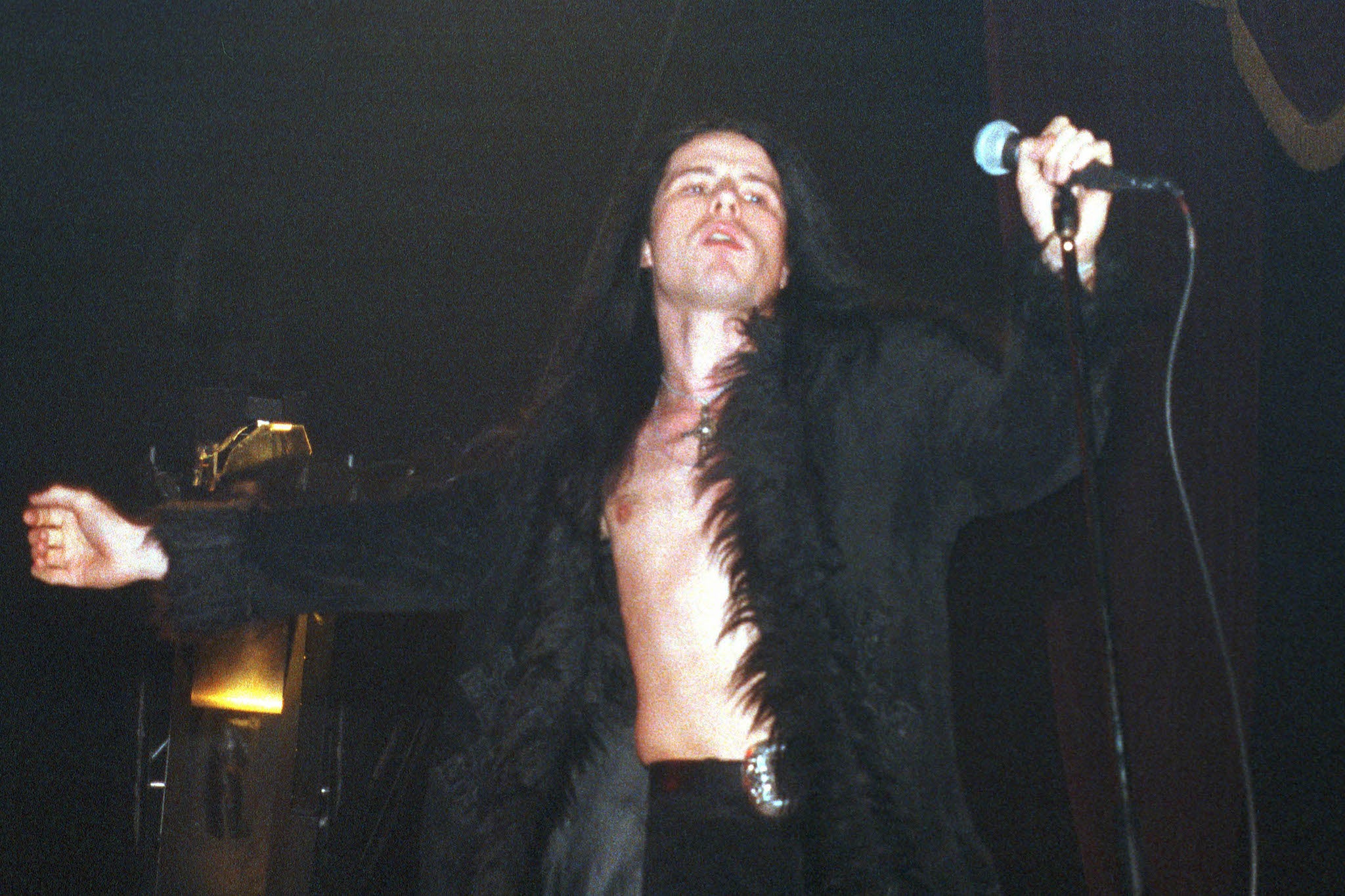
He wound up in Bradford, where a punk band called Violation were on the hunt for a new singer. Astbury had barely sung a note since the school choir, but he had the look – and the voice. He proposed changing the band’s name to Southern Death Cult, a phrase he’d picked up from an anthropology book about indigenous tribes in Mississippi. “We were rehearsing above a reggae store, Roots Records,” he remembers. “Our first audience were Rastafarians and a stoned cat named Rizla.”
Southern Death Cult released their debut single “Moya” at the end of 1982, with Astbury’s lyrics referencing Nagasaki and the Native American word kasota, meaning “to make treeless”. The band split soon after, and Astbury shortened the name to Death Cult for a new group with Duffy, whom he’d gotten to know while touring with the guitarist’s band Theatre of Hate. Death Cult released an EP in July 1983, but truncated their name again to The Cult before appearing on music show The Tube in January 1984. By the following year, Astbury was staring out from the cover of Smash Hits magazine in a frilly lace shirt with a black heart drawn beneath his left eye. “One minute we’re doing Death Cult in Middlesbrough, fighting skinheads and psychobillies, the next we’re in Oh Boy! magazine and Smash Hits,” he marvels incredulously. “How does that work?”
Astbury will sometimes say on stage that “She Sells Sanctuary” is the song that “started everything”. The lead single from the band’s second album Love, it was a Top 20 hit that didn’t leave the charts for over five months. It hasn’t aged a second since, amassing around 250 million streams and soundtracking everything from Euphoria to viral TikTok clips. “I see references to it everywhere,” says Astbury. “Brett Anderson’s book mentions it, Manic Street Preachers have played it. Billy showed it to Mark Ronson when he was babysitting him at 15. There’s all these little stories about “Sanctuary”. For us, it’s just part of the furniture. Usually we try to put it in a part of the set where everyone peaks at the same time and we get to orgasm together. Then you’ve done your job!”

For the follow-up to Love, The Cult recorded an entire album in Oxfordshire that they eventually scrapped after Rick Rubin, then a rising production star, persuaded them to decamp to New York and explore a heavier rock sound. The result was Electric, the band’s first album to go platinum in the United States. “Can you imagine recording with Rick Rubin at Electric Lady Studios in 1986?” asks Astbury. “Bullets were flying. LL Cool J walking around, the Beastie Boys playing on our gear. We were just kids.”
They toured the country with a then-unknown Guns N’ Roses as their support act. “I saw them play the Marquee and they were incredible,” remembers Astbury. “I heard what they were saying, and they were having the same vision as us.”
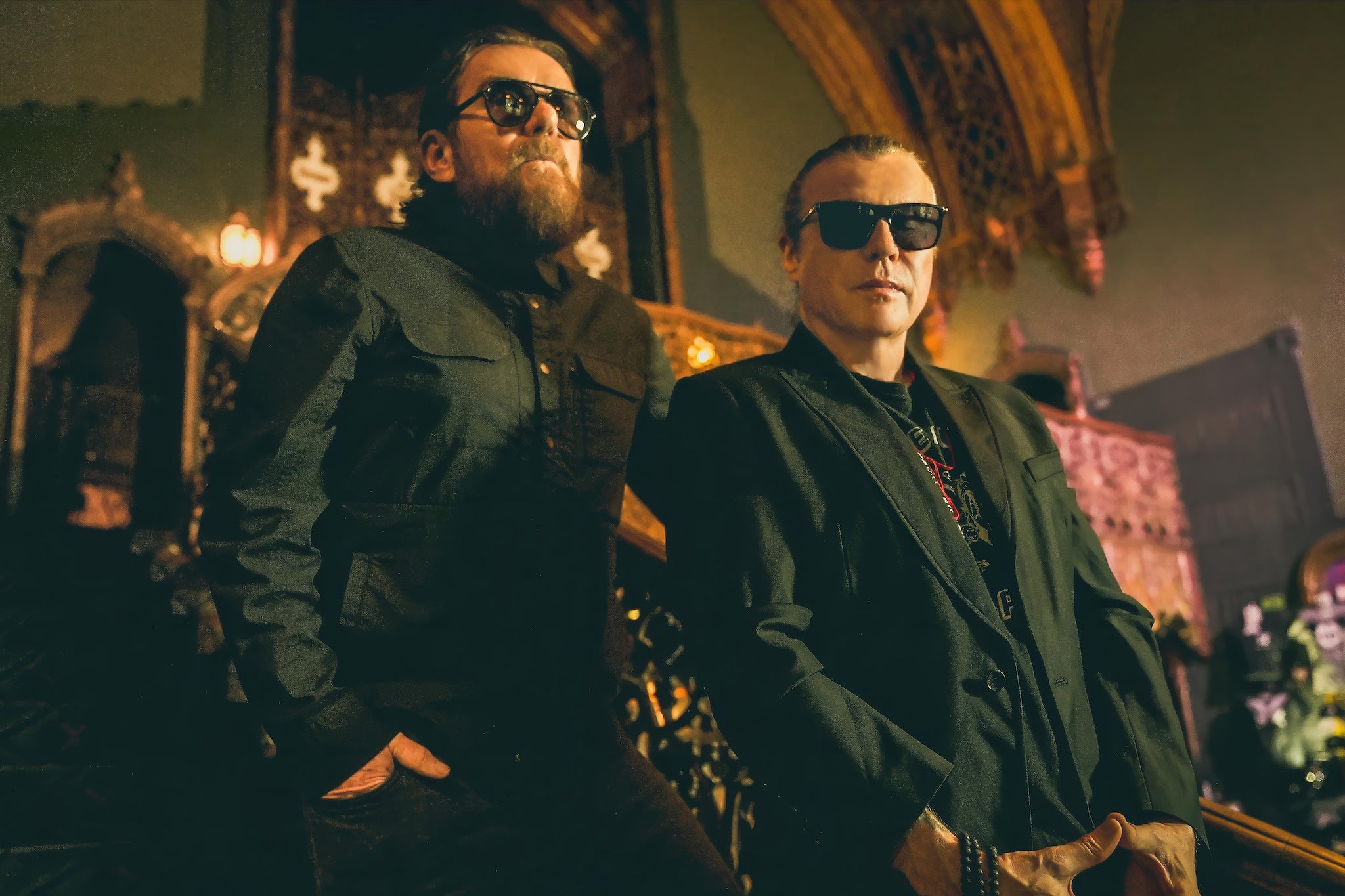
Astbury fell hard for America, making a home for himself in New York as well as in Los Angeles, where he found a flat just around the corner from the bedlam of the Sunset Strip. The band’s success was outstripping his wildest expectations, and he was rubbing shoulders with his idols, including Iggy Pop and David Bowie. “I was a child of Bowie,” he explains. “Then we played with him in ’87. He was incredible, really inquisitive and present. I hung out with him a few more times. I remember being in Tower Video, and a limo pulls up, and in walks David. ‘Hello Ian, how are you? Do you want to help me look for some Trevor Howard films?’ We spent 20 minutes just wandering around, talking about films.”
Another of Astbury’s formative influences, Sex Pistols guitarist Steve Jones, became not just a friend but an occasional teammate. They were part of a loose collective of expats who played football together in Beverly Hills, and their Sunday League team Hollywood United went on to field lineups featuring everyone from Robbie Williams and Jason Statham to ex-pros like Frank Leboeuf. “I remember when Vinnie Jones came and played,” laughs Astbury, a lifelong Evertonian. “He just took a guy out straight away. Unbelievable! What a hit.”
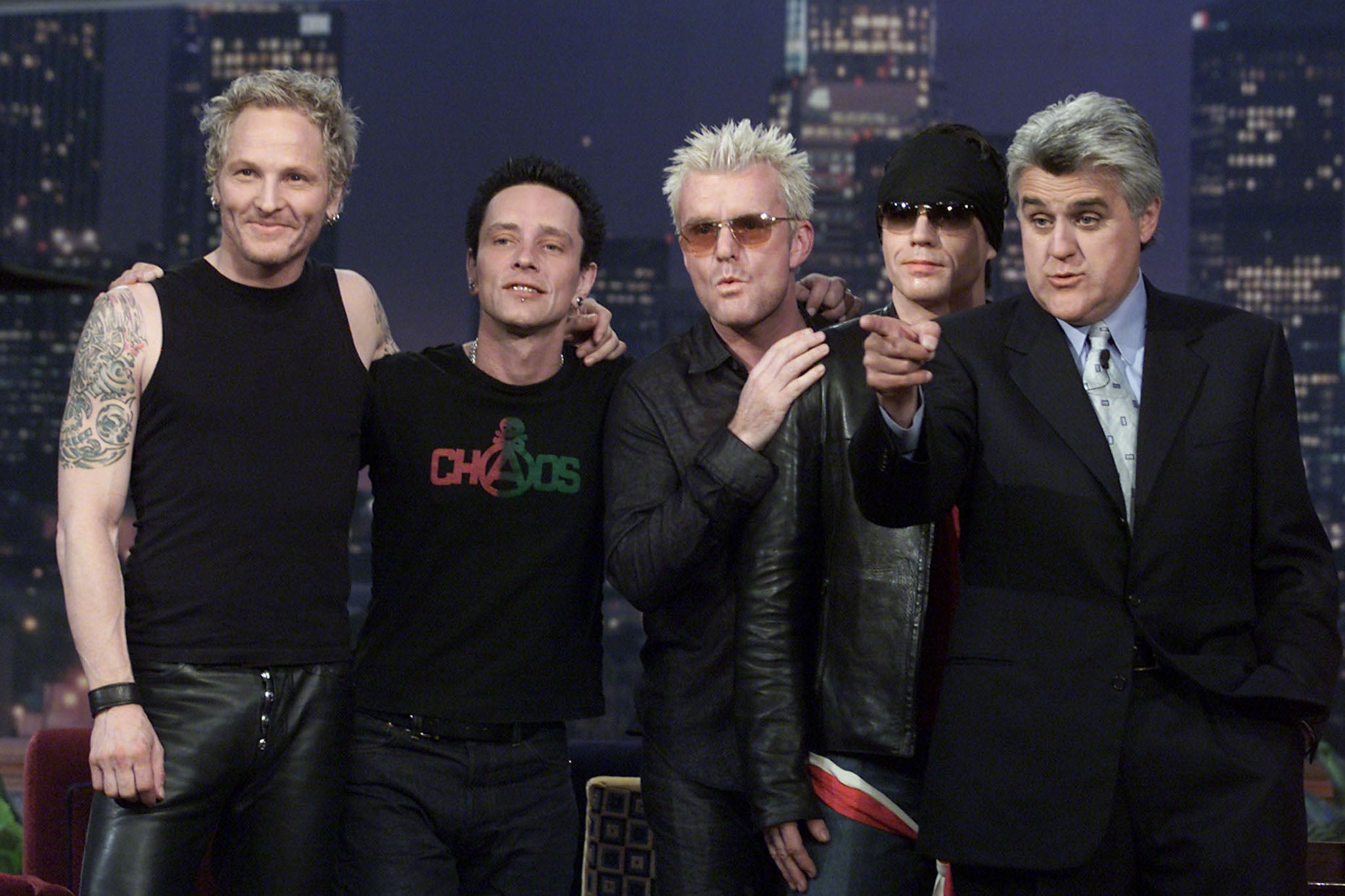
By the end of the Eighties, The Cult were apparently riding high, but Astbury was starting to feel that something wasn’t right. Things came to a head on 6 September 1989 when The Cult performed “Fire Woman”, the lead single from fourth album Sonic Temple, at the MTV Video Music Awards. “The album’s going up the charts, we’re getting really big in America, playing these huge gigs, but now you’re inside the system,” he says. “It wasn’t what I thought it was going to be. I thought it was going to be art, but it got massive and commercial. The day we did the MTV Awards, when everyone’s like, ‘Oh, look at this guy!’, my father was in USC medical centre dying of cancer. I walked out on that stage like a complete zombie. I was empty. I had to rethink everything.”
His immediate response was to work with legendary concert promoter Bill Graham to start a festival, A Gathering of the Tribes. The first edition was held in California in 1990, with a purposefully diverse lineup that included Iggy Pop, Joan Baez, and Public Enemy. “It was really a response to the cultural apartheid that MTV was creating,” explains Astbury. “We were being separated, and segregated, and that didn’t feel good.”
Immediately I was into my python pants
That same year, Astbury was introduced to director Oliver Stone by The Doors’ manager Danny Sugarman. Stone was working on a biopic about the band, and considered casting Astbury to play Jim Morrison. “I was friends with Michael Hutchence and he said, ‘Yeah, they asked me as well!’” recalls Astbury with a chuckle. Although the part eventually went to Val Kilmer, Astbury did perform with the remaining members of the band. “They had a party for the cast at the Whisky a Go Go, and my flat was just around the corner,” explains Astbury. “Danny called and said, ‘Ian, you’ve got to get over here right now. Billy Idol was supposed to sing but he’s drunk. You’ve gotta save this.’ Immediately I was into my python pants. That was my first moment with those guys.”
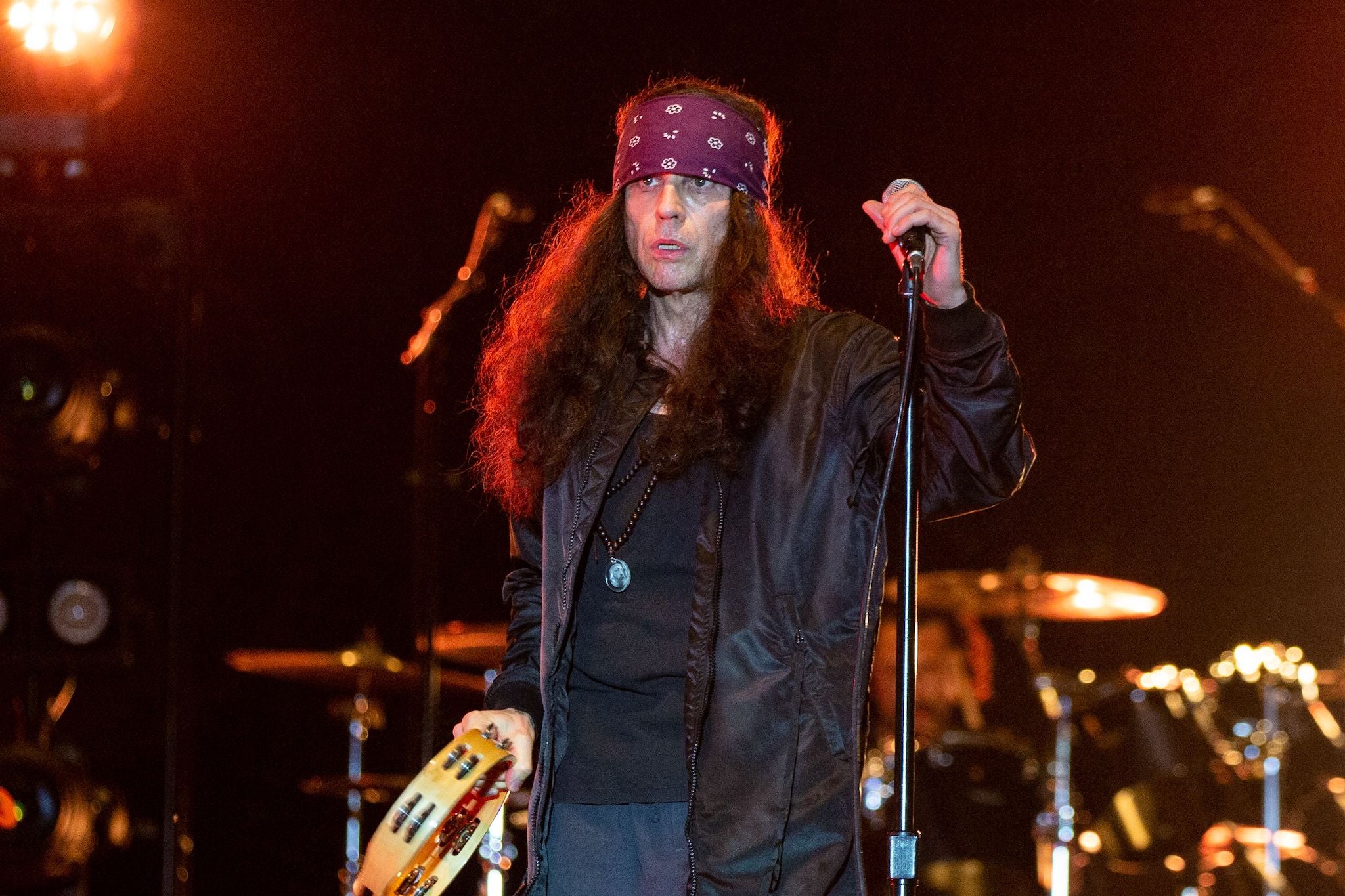
A decade later, keyboardist Ray Manzarek and guitarist Robby Krieger got an offer to re-form the band, and approached Astbury to be their singer. “Manzarek was like, ‘If not now, then when? I don’t want to go to my grave not playing these songs ever again,’” recalls Astbury. “I left The Cult in 2002 for my lost wild years in The Doors! Which is nuts, when I think about watching Apocalypse Now on Sauchiehall Street [in Glasgow] and seeing ‘The End’ and going, ‘Oh my God!’”
Astbury and Duffy reformed The Cult in 2006, releasing four more albums including last year’s Under the Midnight Sun. Yet it’s only now, revisiting the place where they first started, that Astbury is truly able to comprehend quite how far they’ve come.
“Playing Death Cult the other night... I wasn’t ready for that,” he says. “We’d been rehearsing the songs, and as I was pulling away the layers I was having memories of the person I was when I wrote those songs, the experiences I’d had, and how raw I was.” It felt not like nostalgia, but like the new revolution of an old cycle. “If you wait around long enough, it all comes back around,” says Astbury, recalling Manzarek’s words to him two decades ago. “I remember Ray, who would have been about the same age I am now: ‘If not now, then when?’”
Death Cult are on tour until 22 November






Join our commenting forum
Join thought-provoking conversations, follow other Independent readers and see their replies
Comments